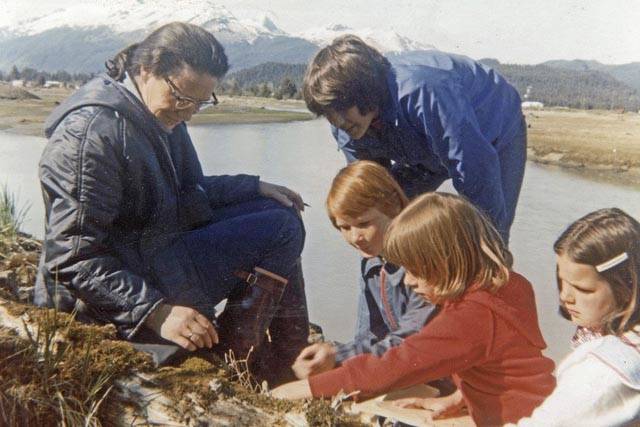Quarantine is temporary, but the sea is eternal.
The Juneau School District will celebrate its 50th Sea Week this spring, even as the schools are shuttered and the learning is pushed out to the homes of students.
“We were going to have lots of in-person celebrations with lots of scientists in person but that’s not happening,” said Peggy Cowan, a former schoolteacher and superintendent. “There’s stuff to celebrate and take pride in.”
Sea Week began in the 1969-1970 school year, Cowan said, pioneered by Auke Bay Elementary School parents. The program soon expanded to include all of Juneau, and then all of Alaska. The week introduces students from K-6 to a variety of science concepts and practical demonstrations.
“Fifty years ago this spring, the parents and the PTA at Auke bay decided the kids should know about where they live and study the natural world there,” Cowan said. “We have some of the most fascinating marine ecology and environments here and kids should know about it.”
Unfortunately, in the time of pandemic, the old ways need rethinking.
“Ideally, we’d love for kids to be able to go to the beach,” said integration teacher Elizabeth Kent. “We recognize that while going to a beach with social distancing is still allowed, not every family is able to do that.” Kent has worked to retool JSD’s Sea Week curriculum to a new, more decentralized teaching model.
“We knew things would be very tricky when they closed schools before spring breaks,” Kent said. “My goal was to get it out before the first batch of negative tides of April.”
The spring tides in Alaska are known for the severity of their tidal variance, which can be as much as 9 meters. Sea Week has always occurred in the spring so that students are able to examine the tidelands. Kent has worked to break out the curriculum so it’s easily accessible to students, teachers and families.
“Some teachers may do it the whole group time. Some may opt to have students do it at home on their own,” Kent said. “That’s the struggle that every teacher has right now as far as distance learning, how do we match the diverse needs in the community.”
Sea Week has traditionally partnered with local organizations like the National Oceanic and Atmospheric Administration, the Alaska Department of Fish and Game, and Douglas Island Pink and Chum for subject matter experts and support.
“One field trip is with a community organization like NOAA, DIPAC, or Fish and Game (Department). The field trip the other classes go on is to the beach during one of the negative tides in the spring,” Kent said. “Some of the other orgs like Discovery Southeast and NOAA are trying to create videos with lessons and things that they would have had for that field trip.”
Kent said that she made the lessons anchored around the home, so everyone could get something out of them.
“Each lesson, I put some sort of home connection,” Kent said. “That’s one of the big things with adapting lessons is being mindful of that.”
• Contact reporter Michael S. Lockett at 757.621.1197 or mlockett@juneauempire.com.

